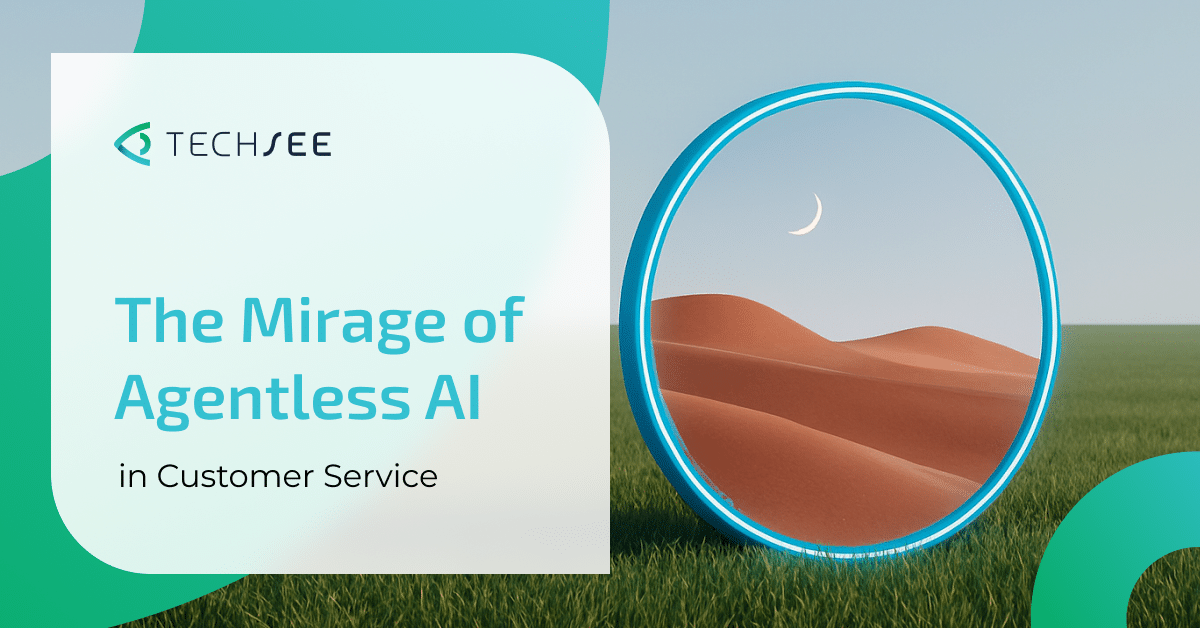Contents
The Mirage of Agentless AI in Customer Service
The idea of a completely agentless contact center has been gaining attention for years. From what we hear in discussions with executives, the question comes up again and again: “Can we automate the entire operation and remove the need for human agents?”.
On paper, the argument seems convincing because AI has become faster, cheaper, and more advanced. The potential savings from eliminating headcount are tempting. But when companies attempt to implement agentless AI in practice, the outcome is rarely the one they hoped for.
In such cases, service quality suffers, customer trust collapses, and churn accelerates. What looked like efficiency on a spreadsheet turns into a fragile strategy in the real world. This is why agentless AI is more mirage than reality. The article explores the failures of AI-only customer service and the importance of combining AI with human agents.
Why Agentless AI Fails in Reality
Agentless AI is based on the idea that machines can do everything humans do in customer service. In reality, most implementations fail because AI-only systems struggle with what matters most. One reason is complexity. Customers self-serve simple questions through self-service, FAQs or AI chatbots.
By the time they reach a live channel, their issue is multi-layered, emotional or urgent. A script-driven AI can reset a password but can’t negotiate a billing dispute or calm a frustrated parent with a broken baby monitor. And it can’t guide someone through fixing their Wi-Fi network across multiple devices.
Another failure point is empathy. Customers want to be heard and understood, especially when the service affects their daily life. We often hear from customer experience leaders that one of the most common complaints is that AI-only systems make customers feel trapped. Customers have to repeat information, which leads to frustration and erodes customer trust.
There’s also the reality of low adoption. Despite years of investment, only about 25% of call centers have successfully integrated AI automation into their daily operation. And 75% of call centers still struggle to make it work at scale. That’s the gap between the agentless vision and operational reality.
Agentless AI also introduces risk. Systems designed to deflect may achieve short-term savings but drive long-term costs through repeat contacts, compliance errors and hidden churn. In conversations with executives, we often hear a variation of the same regret: “We thought customer service automation would scale quality. Instead, it scaled mistakes.”
The Hidden Risks of Over-Automation
When organizations take humans out of the loop, three risks emerge. First, the customer experience risk. Containment without resolution looks good in dashboards but creates high-effort journeys for customers. They leave interactions feeling unheard. Over time, that erodes loyalty faster than almost anything else. In fact, 55% of customers say they get frustrated when chatbots ask too many questions. And nearly half say they can’t get accurate answers.
These numbers confirm what many service leaders already know: AI-only journeys create more friction than they solve. Second, the operational risk. AI can misinterpret intent, hallucinate answers or apply logic that makes sense technically but not contextually. In regulated industries, that’s compliance risk.
In consumer markets, that’s the downstream cost when errors need to be corrected by human staff later. Finally, the strategic risk. A contact center that’s purely agentless sees service as nothing more than a cost to minimize. That ignores its role as a driver of lifetime value. In a subscription economy service is often the deciding factor between retention and churn. Over-automation undermines that strategic asset.
The Evolving Role of Human Agents
Rather than disappearing, human agents are evolving. Their role is shifting from routine call handling to high-value complexity resolution. Agents bring three things AI still cannot: judgment, empathy, and trust. Judgment matters when a customer’s problem doesn’t fit a neat template.
Empathy matters when emotions run high. Trust matters because customers want to feel that someone takes responsibility. We observe in our call center performance reviews that companies that try to cut agents entirely often end up rehiring them within a year. They discover that humans remain essential for the issues that matter most. The future is about enabling agents to operate at a higher level.
Upskilling With AI Support
The real opportunity lies in AI upskilling customer service agents. AI can enhance an agent’s ability to perform under pressure. It can assemble context from past interactions, surface recommendations in real time, and automate manual tasks that used to eat into call handling time.
This is how Tier 1 staff start performing like Tier 2 specialists. Instead of spending minutes searching through knowledge bases or asking customers to repeat details, agents are supported with intelligent prompts and contextual insights.
The outcome is faster resolutions, less effort for customers, and a workforce that delivers more value with less stress. We’re often asked by leaders how to justify investment in AI without chasing the mirage of agentless operations. The answer is clear: measure how AI improves agent performance, not how it replaces them.
Human + AI Collaboration as the Sustainable Model
The sustainable model is AI and human agent collaboration. AI automates what is routine, while humans focus on the complex. But the real breakthrough comes when AI doesn’t just listen or read, it sees.
Visual AI is the missing piece. It allows agents to diagnose product issues based on AI insights from visuals captured by the customer. It then guides the live agent with a step-by-step resolution with live visual instructions. Instead of dispatching a technician to confirm a loose cable or misconfigured router, the issue can be resolved remotely within minutes.
This isn’t theoretical. The experts from a variety of industries, such as telecom providers and consumer electronics brands, visual AI has cut unnecessary truck rolls dramatically, reduced repeat contacts, and increased customer confidence. It doesn’t replace agents; it equips them to solve problems with clarity and speed.
Conclusion: The Mirage vs. Reality
Agentless Artificial Intelligence (AI) is a good idea, but it is a fragile strategy. It promises efficiency, but in practice, it delivers poor experiences, operational errors, and long-term brand damage. The future of customer service is about collaboration between humans and AI, where automation removes friction and visual AI gives agents the context they need to resolve complexity. In this model, agents are an asset to empower. And when empowered with the right tools, they deliver outcomes no “agentless” system can match.
FAQ
Why does agentless AI fail in customer service?
Because it cannot handle complex issues or provide empathy. Customers often feel trapped, leading to dissatisfaction and churn.
What are the risks of relying only on automation in customer service?
The main risks are poor customer experience, compliance errors, hidden churn, and lost opportunities to build loyalty.
What role will human service agents play in the future?
AI and human agents will focus on complex problem-solving, empathy, and trust. Their work will be supported by AI that automates routine tasks.
How can AI upskill customer service agents?
AI supports agents by assembling context, providing real-time recommendations, and automating manual tasks, allowing Tier 1 agents to handle Tier 2-level cases.
What is the most effective model for service in the age of AI?
The best model is human + AI collaboration, with visual AI enabling agents to resolve complex problems quickly and confidently.






